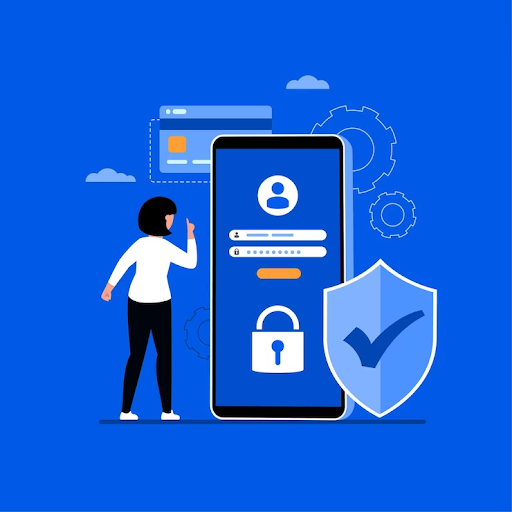Mobile applications have become an integral part of our daily lives, providing us with convenience and functionality at our fingertips. However, with the increasing reliance on mobile apps, the need for robust security measures has also grown exponentially. This comprehensive guide aims to provide you with an in-depth understanding of mobile application security, exploring the best practices, tips, and strategies to safeguard your digital assets and protect both user data and business information.
The Importance of Mobile App Security
In this digital age, mobile app security plays a crucial role in safeguarding user data and protecting businesses from potential threats. Let’s delve into the key reasons why mobile app security is of paramount importance:
Protecting User Data:
Mobile apps often store sensitive user information, including personal details, financial data, and login credentials. Ensuring robust security measures is vital to protect user privacy and prevent unauthorized access to their data. A security breach can lead to severe consequences, such as identity theft, financial fraud, and reputational damage for both users and app developers.
Safeguarding Business Data:
Mobile apps are commonly used by businesses to store and access confidential information, trade secrets, and intellectual property. Ensuring mobile app security is essential to prevent data breaches that could compromise a company’s competitive advantage or reputation. Protecting business data is crucial not only for the company’s success but also for maintaining customer trust and complying with regulatory requirements.
Common Security Risks in Mobile App Development
Developers and businesses must be aware of common security risks associated with mobile app development. Understanding these risks allows them to implement effective security measures and mitigate potential vulnerabilities. Here are some prevalent security risks in mobile app development:
Insecure Data Storage:
Storing sensitive data without encryption or using inadequate encryption methods can leave it vulnerable to unauthorized access. It is crucial to implement strong encryption techniques, such as AES-256, to protect data at rest and in transit. Utilizing secure storage mechanisms provided by the mobile operating system can also enhance data security.
Weak Authentication:
Inadequate authentication mechanisms, such as weak passwords or a lack of multi-factor authentication, can make user accounts susceptible to hacking attempts. Implementing strong password policies, enforcing multi-factor authentication, and considering biometric authentication options can significantly enhance authentication security.
Unsecure Network Communication:
Sending data over unsecured network connections exposes it to potential eavesdropping or man-in-the-middle attacks. It is essential to utilize secure communication protocols like HTTPS and implement certificate pinning to ensure secure data transmission. By doing so, mobile app developers can protect sensitive data from interception and unauthorized access.
Code Vulnerabilities:
Flaws in the code can be exploited by attackers to gain unauthorized access or perform malicious activities within the app. Conducting regular code reviews, using secure coding practices, and leveraging security testing tools can help identify and fix vulnerabilities. Developers should prioritize secure coding practices, such as input validation, proper error handling, and protection against common attacks like SQL injection and cross-site scripting (XSS).
Best Practices for Mobile App Security
Implementing robust security practices throughout the mobile app development lifecycle is essential for building secure applications. Here are some best practices to enhance mobile app security:
Secure Development Lifecycle:
Incorporate security measures throughout the mobile app development process, including requirements gathering, design, coding, testing, and deployment. Consider adopting secure development frameworks like the OWASP Mobile Security Project to ensure a comprehensive approach to security. Emphasize security awareness and training for developers to instill secure coding practices.
Use of Appropriate Encryption:
Encrypt sensitive data both at rest and in transit using industry-standard encryption algorithms. Leverage secure storage mechanisms provided by the mobile operating system to protect data stored on the device. Implement encryption for data transmissions using protocols like Transport Layer Security (TLS) or Secure Sockets Layer (SSL) to ensure the confidentiality and integrity of data in transit.
Implement Strong Authentication and Authorization:
Utilize strong authentication mechanisms, such as password hashing, biometrics (e.g., fingerprint or face recognition), and multi-factor authentication, to verify user identities. Implement proper authorization controls to ensure users can only access the resources they are authorized to. This prevents unauthorized access to sensitive data and functionalities within the app.
Regular Security Testing:
Conduct thorough security testing throughout the development lifecycle, including static and dynamic analysis, penetration testing, and vulnerability scanning. Regularly update and patch any identified vulnerabilities to mitigate potential risks. It is essential to perform security testing during both the development and post-launch phases to identify and address vulnerabilities promptly.
Secure Network Communication:
Ensure secure transmission of data over networks by using encrypted protocols like HTTPS. Implement certificate pinning to prevent man-in-the-middle attacks and ensure the authenticity of the server. Additionally, leverage secure APIs and implement proper validation and verification of data exchanged between the app and the server.
User Permissions and Privacy:
Request permissions from users on an as-needed basis and clearly communicate why those permissions are required. Be transparent about the data collected, stored, and shared by the app. Regularly review and update privacy policies to comply with applicable regulations, such as the General Data Protection Regulation (GDPR) or the California Consumer Privacy Act (CCPA). Respect user privacy preferences and provide them with control over their data.
Conclusion
Mobile app security is paramount in today’s digital landscape. By understanding the common risks and implementing best practices throughout the development lifecycle, app developers can safeguard user data, protect business information, and maintain user trust. Incorporating robust security measures not only strengthen the app’s defenses but also contributes to an overall safer mobile app ecosystem.
Remember, securing your mobile app is an ongoing process. Stay updated with the latest security trends, follow industry best practices, and prioritize the privacy and security of your users. By doing so, you can build mobile apps that users can trust and rely on without compromising their personal data or digital assets.

